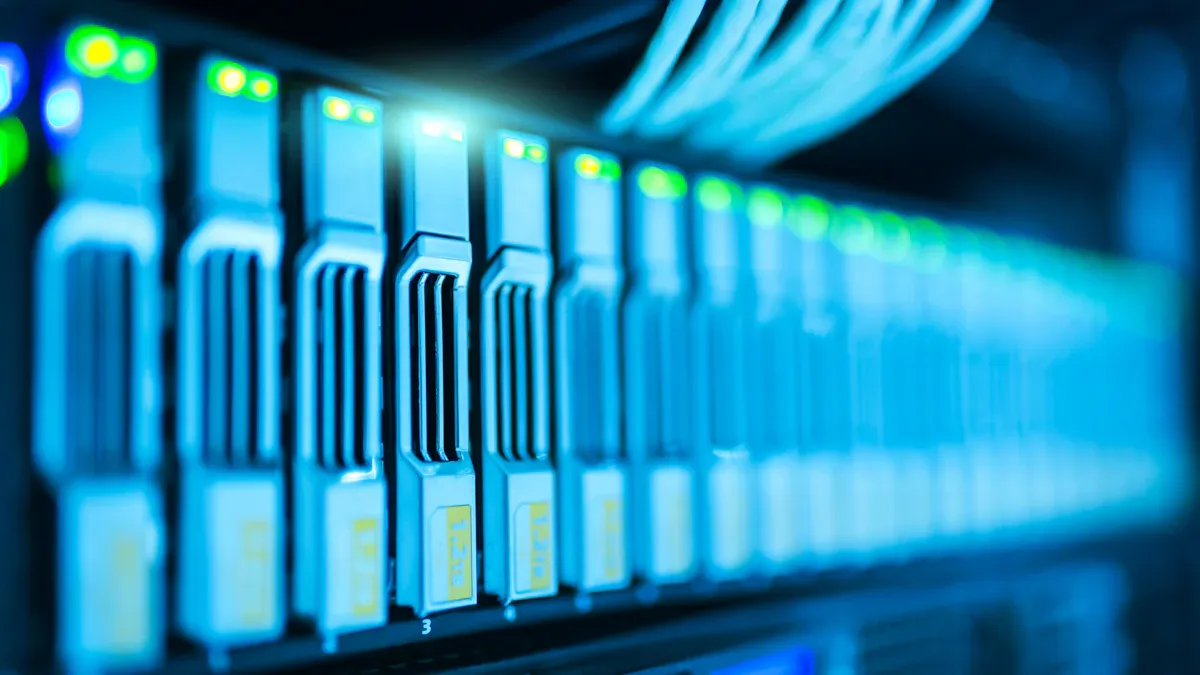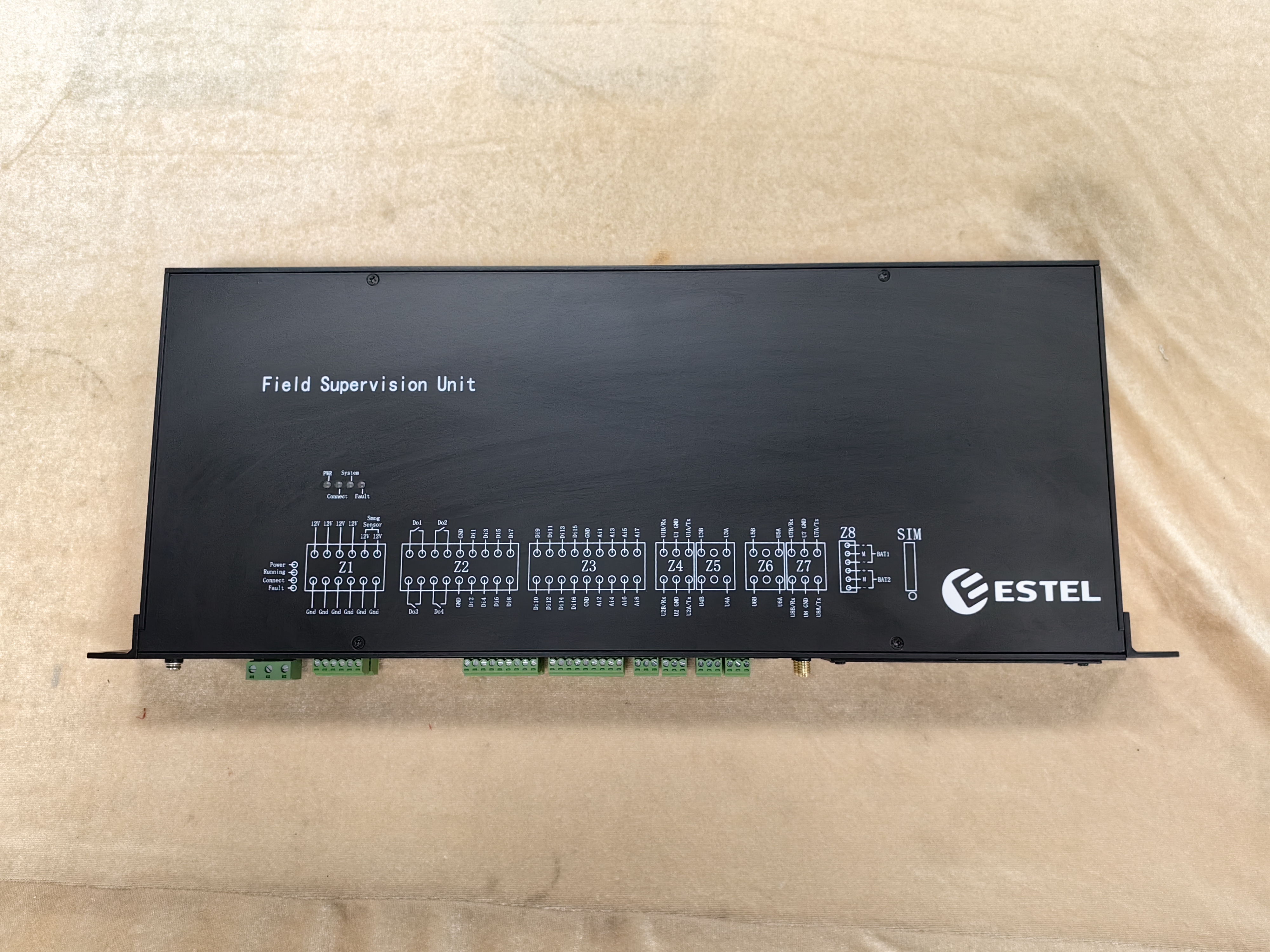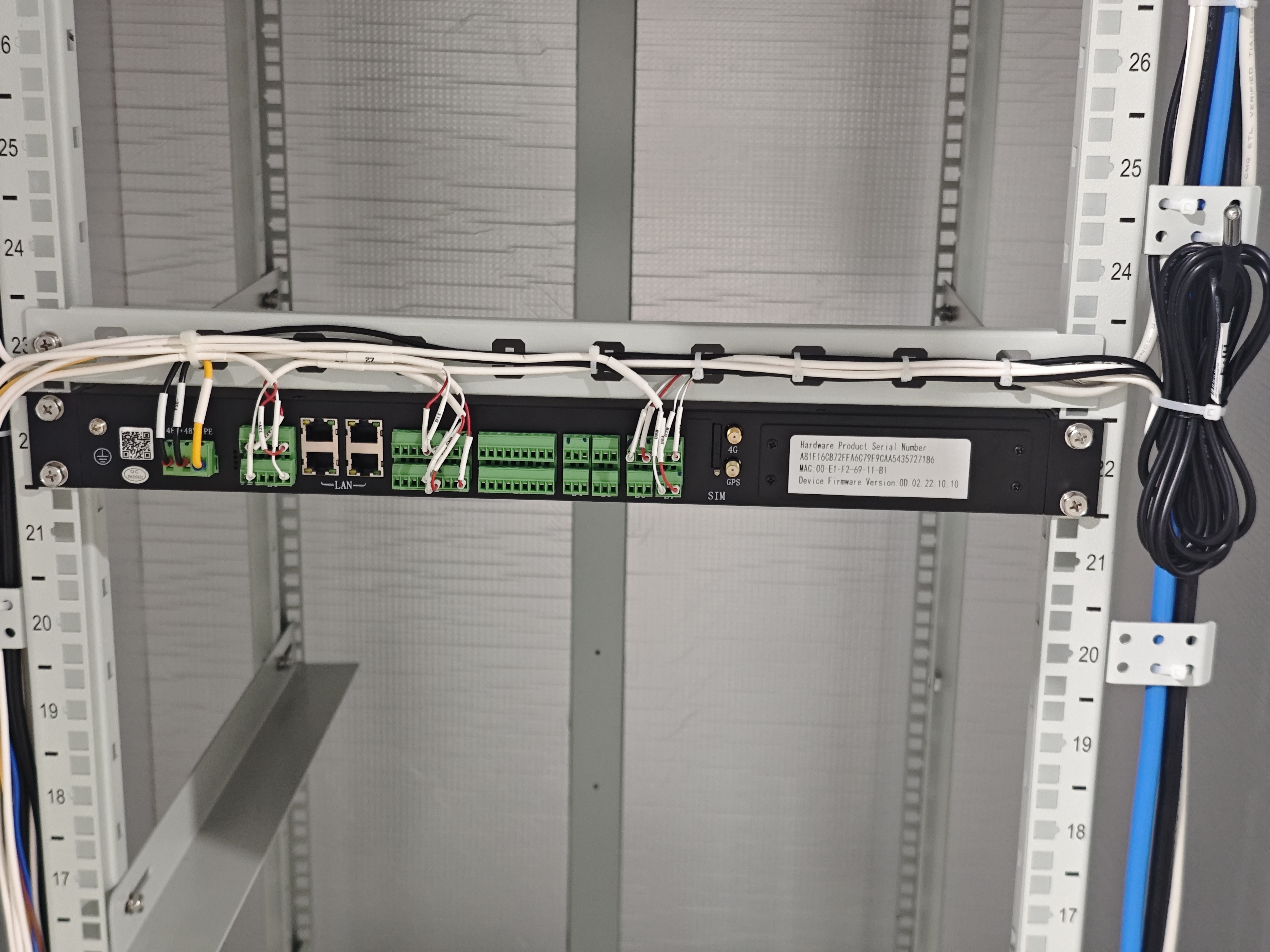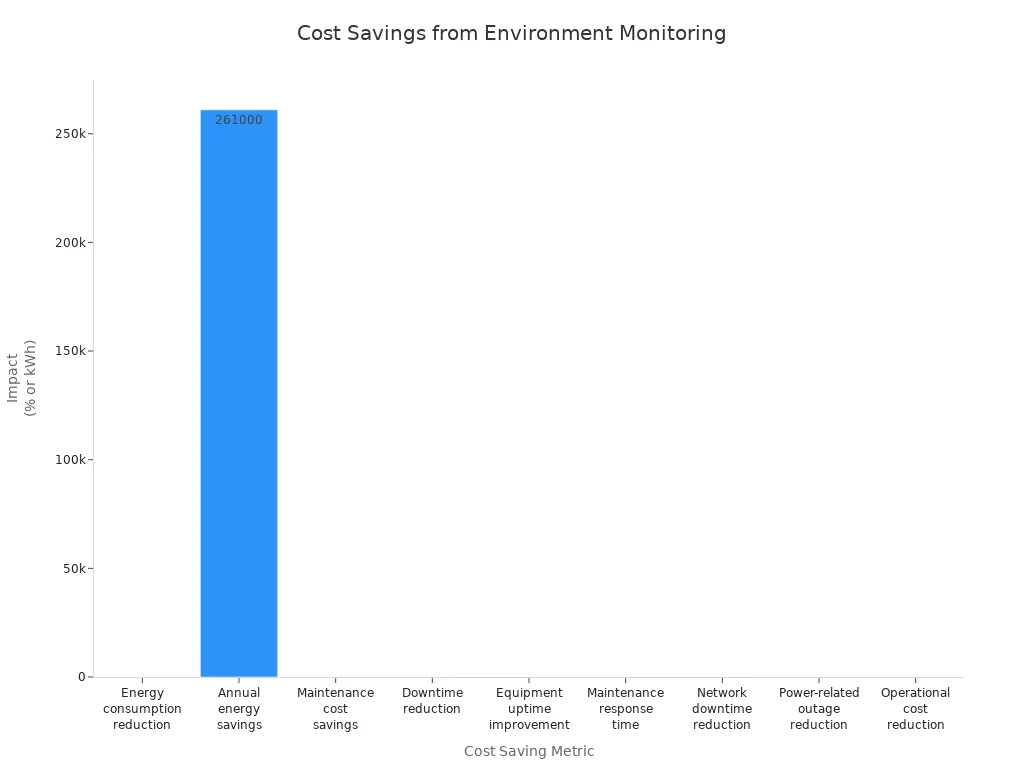Why Environment Monitoring System is the core support for zero downtime in telecom data centers

Environment Monitoring System forms the backbone of operational continuity in telecom data centers. Real-time monitoring detects and prevents environmental threats before they escalate. Downtime in this sector carries a heavy price. The ITIC 2024 survey reveals that large enterprises can lose over $100,000 per hour, with some incidents costing between $1 million and $5 million for every hour of outage. Average costs per minute have increased to nearly $9,000, reflecting the rising dependency on uninterrupted service. These numbers highlight why telecom operators must prioritize robust environmental controls.
Key Takeaways
Environment Monitoring Systems use sensors to track temperature, humidity, airflow, and power in real time, helping prevent equipment failures and downtime.
Integrating monitoring systems with data center tools allows quick alerts and automated responses, enabling fast action before problems grow.
Maintaining proper temperature and humidity levels protects equipment from damage and extends its life, reducing costly repairs.
Effective airflow and cooling management prevent heat buildup, which is a common cause of data center outages.
Using environment monitoring improves uptime, lowers energy and maintenance costs, and helps telecom centers meet safety and sustainability standards.
Environment Monitoring System Overview

Core Components
A telecom data center relies on a robust Environment Monitoring System to maintain operational stability. The system includes several essential components that work together to ensure continuous monitoring and rapid response to environmental changes.
A scalable sensor network tracks temperature, humidity, airflow, power quality, and power consumption. These sensors provide real-time data from both internal and external sources.
Network infrastructure, such as routers and switches, supports reliable data transmission using standard protocols like TCP/IP.
A central management repository or user interface aggregates and visualizes collected data, making it accessible for quick decision-making.
Operational procedures, including a Concept of Operations (CONOPS) document, guide staff in using the system effectively.
Integration with Data Center Infrastructure Management (DCIM) tools optimizes facility operations and enhances visibility.
Alarms and detectors, such as smoke detection systems, add an extra layer of safety and help prevent operational disruptions.
These components form the backbone of an Environment Monitoring System, enabling telecom operators to identify and address risks before they impact uptime.
Integration in Data Centers
Telecom data centers require seamless integration of the Environment Monitoring System with existing infrastructure. DCIM software plays a central role in this process. Sensors placed throughout the facility continuously monitor environmental factors and send real-time data to the DCIM platform. This platform visualizes information, triggers alerts when thresholds are exceeded, and helps optimize cooling and power usage.
DCIM solutions support multiple communication protocols, ensuring compatibility with network equipment, power systems, and third-party tools. APIs and integration tools connect the monitoring system with other platforms, such as configuration management databases and ticketing systems. This open architecture allows telecom data centers to manage environmental conditions alongside hardware performance, supporting proactive management and reducing operational costs.
Environmental Risks
Temperature and Humidity
Temperature and humidity fluctuations present some of the most common and damaging risks in telecom data centers. Equipment exposed to unstable conditions faces condensation, corrosion, static discharge, and overheating. These issues often lead to hardware failures and shortened equipment lifespan. ASHRAE recommends maintaining temperatures between 18°C and 27°C (64°F to 81°F) and relative humidity around 50%, with a safe range from 20% to 80%. Proactive monitoring with sensors ensures these parameters remain within optimal ranges, maximizing uptime and reducing maintenance costs.
Equipment Class | Temp Range (°C) | Temp Range (°F) | Relative Humidity (%) |
|---|---|---|---|
A1 to A4 | 18 to 27 | 64.4 to 80.6 | 50 to 70 |
A1 Allowable | 15 to 32 | 59 to 89.6 | 8 to 80 |
A4 Allowable | 5 to 45 | 41 to 113 | 8 to 90 |
Data centers without environmental sensors experience more frequent failures due to undetected overheating and corrosion. Monitoring systems reduce downtime by up to 35% and lower component failures by 40%. This demonstrates why continuous monitoring of temperature and humidity is critical for operational reliability.
Airflow and Cooling
Proper airflow and cooling prevent heat buildup, which can stress and eventually damage sensitive equipment. Cooling failures account for up to 13% of all data center outages. Poor cable management, blocked vents, or inadequate airflow through cabinets can cause localized hotspots. Data centers use advanced airflow management techniques such as:
Sealing air gaps and installing barriers to separate hot and cold aisles
Chimney containment to channel hot air away from equipment
Blanking panels to prevent air mixing
Real-time temperature and airflow sensors for early detection of issues
These strategies explain why telecom operators must invest in robust airflow and cooling management to avoid costly outages and maintain service continuity.
Water, Fire, and Power
Water leaks, fire, and power failures represent significant threats to telecom data centers. Power failures, especially UPS malfunctions, cause nearly 29% of outages, while water leaks account for about 10%. Fire risks, though less frequent, can have catastrophic consequences. Effective monitoring systems detect leaks, smoke, and power anomalies early, enabling rapid intervention.
Best practices include using advanced fire suppression agents, redundant power supplies, and very early smoke detection systems (VESDA). Regular risk assessments and disaster recovery planning further reduce vulnerability.
These measures highlight why comprehensive environmental monitoring is essential for protecting telecom infrastructure from unpredictable and potentially devastating events.
Preventing Downtime

Real-Time Alerts
Telecom data centers face constant threats from environmental changes. Real-time alerts form the first line of defense against downtime. Sensors monitor temperature, humidity, airflow, and power quality around the clock. These sensors detect abnormal conditions such as temperature spikes, humidity fluctuations, or power anomalies before they escalate. When thresholds are exceeded, the system sends immediate notifications to technicians and facility managers.
Real-time alerts enable rapid response to environmental changes, reducing downtime and costly repairs.
Remote monitoring eliminates the need for constant physical inspections, allowing teams to detect and address issues faster.
Early warning systems notify staff before minor problems become major failures, such as undercooling or short circuits.
Integration with power and cooling systems helps maintain stable conditions, preventing incident escalation.
Continuous monitoring supports proactive identification and remediation of failures before they disrupt service.
Real-time alerts minimize Mean Time to Resolution (MTTR). They instantly identify root causes, trigger immediate containment actions, and support activation of backup systems. This approach limits damage and recovery time, ensuring that telecom services remain uninterrupted.
Advanced technologies further enhance alerting capabilities. AI-driven anomaly detection identifies unusual patterns in sensor data, improving early detection and predictive accuracy. Automated incident categorization reduces manual triage, speeding up response times. These innovations help telecom operators maintain high service levels and protect critical infrastructure.
Proactive Response
A proactive response strategy transforms early warnings into decisive action. Environment Monitoring System platforms integrate with building automation and power management systems to automate responses. When sensors detect deviations from safe parameters, the system can trigger actions such as activating cooling fans, adjusting HVAC settings, or switching to backup power supplies.
Automated alerts via email, text, or SNMP traps ensure rapid notification and response.
Systems like Sentinel PRO allow remote monitoring, alarm configuration, and historical data review, supporting quick intervention.
Strategic sensor placement and regular trend analysis help prevent issues from escalating into service interruptions.
Integration with network monitoring tools enables seamless coordination between environmental and IT operations.
Automation reduces manual intervention and speeds up response times. For example, if a water leak is detected, the system can activate sump pumps and alert maintenance teams instantly. If a temperature threshold is breached, cooling units turn on automatically, preventing overheating and equipment damage. These automated responses ensure optimal equipment operation and security.
Proactive monitoring reduces downtime costs, protects assets, and maintains compliance. Early detection of deviations allows operators to intervene before equipment damage or service interruptions occur.
Intelligent event management systems take proactive response to the next level. AI-driven predictive maintenance anticipates equipment failures before they happen, reducing downtime and improving network reliability. Digital twins and scenario simulations support capacity planning and risk assessment, strengthening predictive mitigation. Unified data intelligence breaks down silos, enabling better decision-making and faster incident resolution.
Predictive analytics forecast equipment failures and network issues, enabling scheduled maintenance that prevents service disruptions.
AI automates diagnostics, alerts, and ticket handling, accelerating response times and reducing operational overhead.
Lifecycle forecasting predicts hardware end-of-life, recommending optimal replacement timelines.
These capabilities explain why telecom data centers rely on environment monitoring systems to prevent downtime. By combining real-time alerts, automated responses, and intelligent event management, operators can anticipate risks, act swiftly, and maintain resilient service continuity.
Business Benefits
Uptime and Reliability
Telecom operators depend on near-continuous service. An Environment Monitoring System helps achieve 99.99% uptime by tracking temperature, humidity, airflow, and power quality. Operators detect anomalies early and perform preemptive maintenance, which reduces outages and extends equipment life. Proper identification and labeling in data centers also speed up troubleshooting and minimize human error. These practices support higher tier classifications, such as Tier III and IV, which require fault tolerance and near-continuous availability. By maintaining ASHRAE guidelines and using real-time alarms, telecom data centers experience fewer failures and deliver reliable service to customers.
Cost and Efficiency
Cost control remains a top priority for telecom providers. Environment monitoring delivers measurable savings by reducing downtime, energy use, and maintenance costs. The following table highlights the quantifiable impact:
Cost Saving Metric | Quantifiable Impact / Percentage |
|---|---|
Energy consumption reduction | Up to 20% savings in energy use |
Annual energy savings | Over 261,000 kWh saved annually |
Maintenance cost savings | Up to 40% reduction |
Downtime reduction | 15%–30% decrease |
Equipment uptime improvement | Up to 20% increase |
Maintenance response time | 40% faster |
Network downtime reduction | 35% reduction |
Power-related outage reduction | Up to 40% fewer outages |
Operational cost reduction | 25% lower expenses |

Operators also optimize energy use by monitoring temperature, humidity, and airflow in real time. Intelligent power distribution and predictive maintenance prevent unnecessary energy consumption and equipment failures. These improvements lead to lower operational costs and higher efficiency.
Compliance and Sustainability
Regulatory compliance and sustainability drive long-term success. Environment monitoring supports standards such as ASHRAE, NFPA, and ANSI/TIA-942 by ensuring continuous monitoring of critical parameters. Operators use sensors to detect fire, water leaks, and power fluctuations, which helps maintain safety and reliability. Monitoring systems provide documentation for audits and support data security regulations like HIPAA and ISO 27001.
Real-time environmental data also enables telecom operators to reduce their carbon footprint and achieve certifications such as LEED. By optimizing energy use and integrating with green building practices, data centers meet both regulatory and sustainability goals.
Key benefits include:
Improved service levels and customer satisfaction
Reduced risk of regulatory penalties
Enhanced operational agility and resilience
Telecom data centers achieve zero downtime by prioritizing robust environment monitoring. Industry experts highlight several reasons for this focus:
Enhanced reliability through real-time tracking of temperature, humidity, and power
Early detection of threats like water leaks or UPS failures, preventing costly outages
Improved operational efficiency and reduced energy costs
Stronger compliance with standards and better customer trust
Regular assessment and timely upgrades of monitoring systems ensure long-term operational excellence and sustained business growth. Telecom leaders should view environment monitoring as a strategic investment for future resilience.
FAQ
Why do telecom data centers need environment monitoring systems?
Telecom data centers rely on environment monitoring systems to prevent costly downtime. These systems detect threats like overheating, water leaks, and power failures. Operators use real-time data to maintain optimal conditions and protect critical infrastructure.
Why does real-time monitoring matter for zero downtime?
Real-time monitoring enables immediate detection of environmental risks. Operators receive instant alerts and can act before issues escalate. This approach minimizes service interruptions and supports continuous network availability.
Why should operators invest in predictive analytics for monitoring?
Predictive analytics help operators anticipate equipment failures. By analyzing trends, the system recommends maintenance before breakdowns occur. This proactive strategy reduces repair costs and extends equipment life.
Why is compliance important in environment monitoring?
Compliance ensures that data centers meet industry standards and legal requirements. Operators avoid penalties and build customer trust by maintaining proper documentation and safe operating conditions.
Why does environment monitoring improve energy efficiency?
Environment monitoring systems track temperature, humidity, and airflow. Operators use this data to optimize cooling and power usage. Efficient energy management lowers operational costs and supports sustainability goals.
See Also
Best Practices For Monitoring Outdoor Telecom Cabinets Effectively
Exploring ESTEL PDUs And Their Function In Data Cabinets
The Importance Of Outdoor Cabinets In Modern Telecom Systems
CALL US DIRECTLY
86-13752765943
3A-8, SHUIWAN 1979 SQUARE (PHASE II), NO.111, TAIZI ROAD,SHUIWAN COMMUNITY, ZHAOSHANG STREET, NANSHAN DISTRICT, SHENZHEN, GUANGDONG, CHINA


